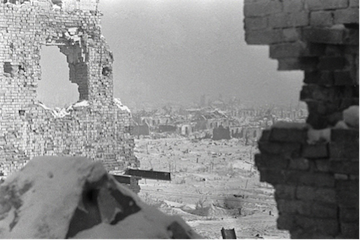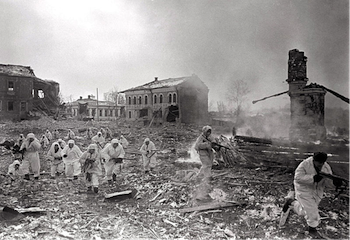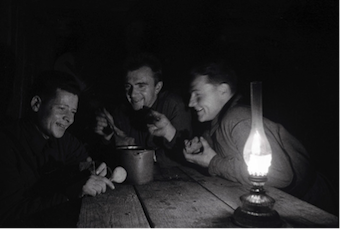

|
The Spirit of Stalingrad  Stalingrad  Stalingrad, 1942 Fighting for a city was also important. The defenders of Stalingrad displayed extraordinary courage, fighting for every street and building against superior German forces. They would not give the city up and evacuate to the eastern shore of the Volga, where the main Soviet forces were massed. It was this determination - a human spirit that cannot be explained by military discipline or ideology - that tipped the scales in this decisive battle of the war. In his diary in September 1942, the head of the Stalingrad Defence Committee recorded a conversation he had overheard between a group of newly-arrived troops and a wounded soldier who had been evacuated from the burning city: 'What is going on in the city?' [the men asked the wounded soldier]. Soldiers and civilians were more prepared to fight when they identified the Soviet cause with the defence of a particular community, a real network of human ties, than when they were called upon to fight for some abstract notion of a 'Soviet motherland'.  Soldiers at rest Comradeship was crucial to military cohesion and effectiveness. Soldiers give their best in battle when they feel some sort of loyalty to a small unit of comrades. In 1941-2, the rates of loss in the Red Army were so high that small groups seldom lasted long. But after 1942 military units began to stabilize and the comradeship which men found within them became a decisive factor in combat. The closeness of these friendships naturally developed from the dangers these men faced. Veterans recall the intimacy of these wartime friendships with idealism and nostalgia. |
© 2014 Orlando Figes | All Rights Reserved